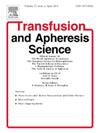捐赠中心的GMP
IF 1.2
4区 医学
Q4 HEMATOLOGY
引用次数: 0
摘要
背景:血液成分的采集和生产应符合现行的血液指南,以确保献血者安全和血液制品的质量。制定了血液采集和处理的整个过程以及采血程序的指南。这种良好生产规范(GMP)的实施对捐赠中心是强制性的。本文综述了供体中心GMP设计原则及其对供体中心质量管理的影响。GMP相关章节和实际问题说明了如何管理GMP。结果欧洲GMP指南有助于药品生产的规范化。GMP指南中描述了质量控制和管理、文件和生产的要求。风险管理有助于识别和量化生产过程中的故障。结论GMP的实施保证了供体和产品的安全。本文章由计算机程序翻译,如有差异,请以英文原文为准。
GMP in donor centres
Background
Collection and production of blood components should be in line with current blood guidelines to ensure both donor safety and the quality of the blood product. Guidelines were developed for the whole process of blood collection and processing as well as for apheresis procedures. Implementation of such Good Manufacturing Practice (GMP) is mandatory for donor centres.
Design
Principles of GMP and its impact on quality management for the donor centre are reviewed in the present paper. Relevant GMP chapters and practical issues show how to manage GMP.
Results
The European GMP guideline helps to standardize the production of medicinal products. Requirements for quality control and management, documentation and manufacturing are described in GMP guidelines. Risk management helps to identify and quantify failures in the production process.
Conclusion
Implementation of GMP ensures donor and product safety.
求助全文
通过发布文献求助,成功后即可免费获取论文全文。
去求助
来源期刊
CiteScore
3.60
自引率
5.30%
发文量
181
审稿时长
42 days
期刊介绍:
Transfusion and Apheresis Science brings comprehensive and up-to-date information to physicians and health care professionals involved in the rapidly changing fields of transfusion medicine, hemostasis and apheresis. The journal presents original articles relating to scientific and clinical studies in the areas of immunohematology, transfusion practice, bleeding and thrombotic disorders and both therapeutic and donor apheresis including hematopoietic stem cells. Topics covered include the collection and processing of blood, compatibility testing and guidelines for the use of blood products, as well as screening for and transmission of blood-borne diseases. All areas of apheresis - therapeutic and collection - are also addressed. We would like to specifically encourage allied health professionals in this area to submit manuscripts that relate to improved patient and donor care, technical aspects and educational issues.
Transfusion and Apheresis Science features a "Theme" section which includes, in each issue, a group of papers designed to review a specific topic of current importance in transfusion and hemostasis for the discussion of topical issues specific to apheresis and focuses on the operators'' viewpoint. Another section is "What''s Happening" which provides informal reporting of activities in the field. In addition, brief case reports and Letters to the Editor, as well as reviews of meetings and events of general interest, and a listing of recent patents make the journal a complete source of information for practitioners of transfusion, hemostasis and apheresis science. Immediate dissemination of important information is ensured by the commitment of Transfusion and Apheresis Science to rapid publication of both symposia and submitted papers.

 求助内容:
求助内容: 应助结果提醒方式:
应助结果提醒方式:


